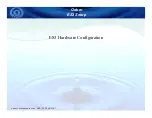
Chapter 5: Operating Instructions
Home Use Operation Manual
5-11
Cleaning or Disinfecting the Sensors
Clean or disinfect reusable sensors before attaching to a new patient.
WARnInG! Unplug the sensor from the monitor before cleaning or disinfecting.
WARnInG! Do not autoclave, ethylene oxide sterilize, or immerse the sensors in liquid.
Clean the sensor with a soft cloth moistened in water or a mild soap solution. To disinfect the
sensor, wipe the sensor with a 70% isopropyl alcohol solution. If there is contamination with
blood borne pathogens (BBPs) or other potentially infectious materials (OPIMs), then the use of a
facility approved disinfectant of appropriate spectrum for the suspected organisms is appropriate.
CAUTIOn! Do not immerse the sensor in any liquid.
CAUTIOn! Cleaning with disinfectants, including alcohol, may shorten the life of the plastic
or electronic parts; but appropriate disinfection must still be performed.
Checking the Sensor and Oximetry Cable
Follow these instructions each time before you attach the sensor to the patient. This helps ensure
the sensor and oximetry cable are working properly.
WARnInG! Using a damaged oximetry sensor or cable may cause inaccurate readings.
Inspect each sensor and cable. If a sensor or cable appears damaged, do
not use it. Use another sensor or cable or contact your authorized service
representative for help.
WARnInG! Do not use more than one Oximetry extension Cable. The monitor may fail to
operate properly or could fail to alarm if multiple Oximetry extension Cables
are connected together.
WARnInG! Misuse or improper handling of the sensor and cable may result in damage to
the sensor. This may cause inaccurate readings.
Before the sensor is attached, check the integrity of the sensor and cable.
1.
If not using the oximetry extension cable, connect the sensor to the oximeter. Push the
2.
sensor’s connector firmly into the oximeter.
If using the oximetry extension cable, connect the sensor to the cable and the cable to the
oximeter. Push the cable connector firmly into the oximeter.
Make sure the red light in the sensor is illuminated.
3.
Now the sensor can be attached to the patient.
4.
WARnInG! If any of the integrity checks fail, do not attempt to monitor the patient. Use
another sensor or oximetry extension cable, or contact the authorized service
representative for help if necessary.
nOTe: Obstructions or dirt on the sensor’s red light or detector may cause the checks to
fail. Make sure there are no obstructions and the sensor is clean.
Summary of Contents for Oxi-Pulse 30
Page 2: ......
Page 6: ...Table of Contents iv Home Use Operation Manual This page is intentionally left blank ...
Page 16: ...Chapter 1 Introduction 1 10 Home Use Operation Manual This page is intentionally left blank ...
Page 22: ...Chapter 3 Getting Started 3 4 Home Use Operation Manual This page is intentionally left blank ...
Page 46: ...Chapter 6 Alarms 6 6 Home Use Operation Manual This page is intentionally left blank ...
Page 62: ...Chapter 9 Troubleshooting 9 6 Home Use Operation Manual This page is intentionally left blank ...
Page 65: ......
















































